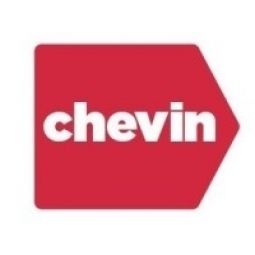Technology Category
- Functional Applications - Fleet Management Systems (FMS)
Applicable Industries
- Buildings
- Cities & Municipalities
Applicable Functions
- Maintenance
- Procurement
Use Cases
- Fleet Management
- Transportation Simulation
About The Customer
The customer in this case study is the State of Missouri Office of Administration. This office serves as the administrative and managerial arm of the Office of the Governor and coordinates the central management functions of state government. The office performs a wide range of vital functions necessary for the operation of state government. These functions include centralized accounting, budgeting, information technology, procurement services, maintenance of state buildings, and management of personnel classification. The office is responsible for managing a fleet of over 5,000 vehicles and assets, which is a significant task that requires an efficient and effective management system.
The Challenge
The State of Missouri Office of Administration, which serves as the administrative and managerial arm of the Office of the Governor, was facing challenges in managing its fleet of over 5,000 vehicles and assets. The office is responsible for a wide range of vital functions necessary for the operation of state government, including centralized accounting, budgeting, information technology, procurement services, maintenance of state buildings, and management of personnel classification. However, the task of keeping track of all state vehicles was proving to be a significant challenge. The office needed a system that could not only help them manage their fleet efficiently but also provide more information and accountability.
The Solution
The State of Missouri Office of Administration decided to implement FleetWave, a fleet management system, to address their challenges. The system was implemented a year ago and has since been used to manage the state's fleet of vehicles and assets. FleetWave has proven to be a good system, providing the office with more versatility in managing their fleet. It has also provided more information about the state's vehicles and assets, which has led to increased accountability. The FleetWave system has been a good experience for the office, and they have found it to be a valuable tool in their fleet management efforts. The office also attended the Chevin Customer Conference 2022 to learn more about the system and to get to know the Chevin team better.
Operational Impact

Case Study missing?
Start adding your own!
Register with your work email and create a new case study profile for your business.
Related Case Studies.

Case Study
Turning A Stadium Into A Smart Building
Honeywell created what it called the “intelligent system” for the National Stadium in Beijing, China, turning the venue for the opening and closing events at the 2008 Summer Olympics into a “smart building.” Designed by highly controversial artist Ai Weiwei, the “Bird’s Nest” remains one of the most impressive feats of stadium architecture in the world. The 250,000 square meter structure housed more than 100,000 athletes and spectators at a time. To accommodate such capacity, China turned to Honeywell’s EBI Integrated Building Management System to create an integrated “intelligent system” for improved building security, safety and energy efficiency.

Case Study
Energy Saving & Power Monitoring System
Recently a university in Taiwan was experiencing dramatic power usage increases due to its growing number of campus buildings and students. Aiming to analyze their power consumption and increase their power efficiency across 52 buildings, the university wanted to build a power management system utilizing web-based hardware and software. With these goals in mind, they contacted Advantech to help them develop their system and provide them with the means to save energy in the years to come.
.png)
Case Study
Smart Street Light Network (Copenhagen)
Key stakeholders are taking a comprehensive approach to rethinking smart city innovation. City leaders have collaborated through partnerships involving government, research institutions and solution providers. The Copenhagen Solutions Lab is one of the leading organizations at the forefront of this movement. By bringing together manufacturers with municipal buyers, the Copenhagen Solutions Lab has catalyzed the development and deployment of next-generation smart city innovations. Copenhagen is leveraging this unique approach to accelerate the implementation of smart city solutions. One of the primary focus areas is LED street lighting.

Case Study
Buoy Status Monitoring with LoRa
The Netherlands are well-known for their inland waterways, canals, sluices and of course port activities. The Dutch Ministry of Infrastructure indicates that there are thousands of buoys and fixed items in and near water environments that would profit from IoT monitoring. One of the problems with buoys for example, is that they get hit by ships and the anchor cable breaks. Without connectivity, it takes quite some time to find out that something has happened with that buoy. Not to mention the costs of renting a boat to go to the buoy to fix it. Another important issue, is that there is no real-time monitoring of the buoys at this moment. Only by physically visiting the object on the water, one gains insight in its status.

Case Study
Barcelona Case Study
Barcelona’s heavy traffic and its associated high levels of pollution were the primary factors that motivated some companies and universities to work on strategies for improving traffic in the city centre. Bitcarrier is one of the technologies involved in the In4Mo Project, whose main objective is to develop the applications that form the core of smart mobility, one of the fundamental pillars of the smart city concept.








